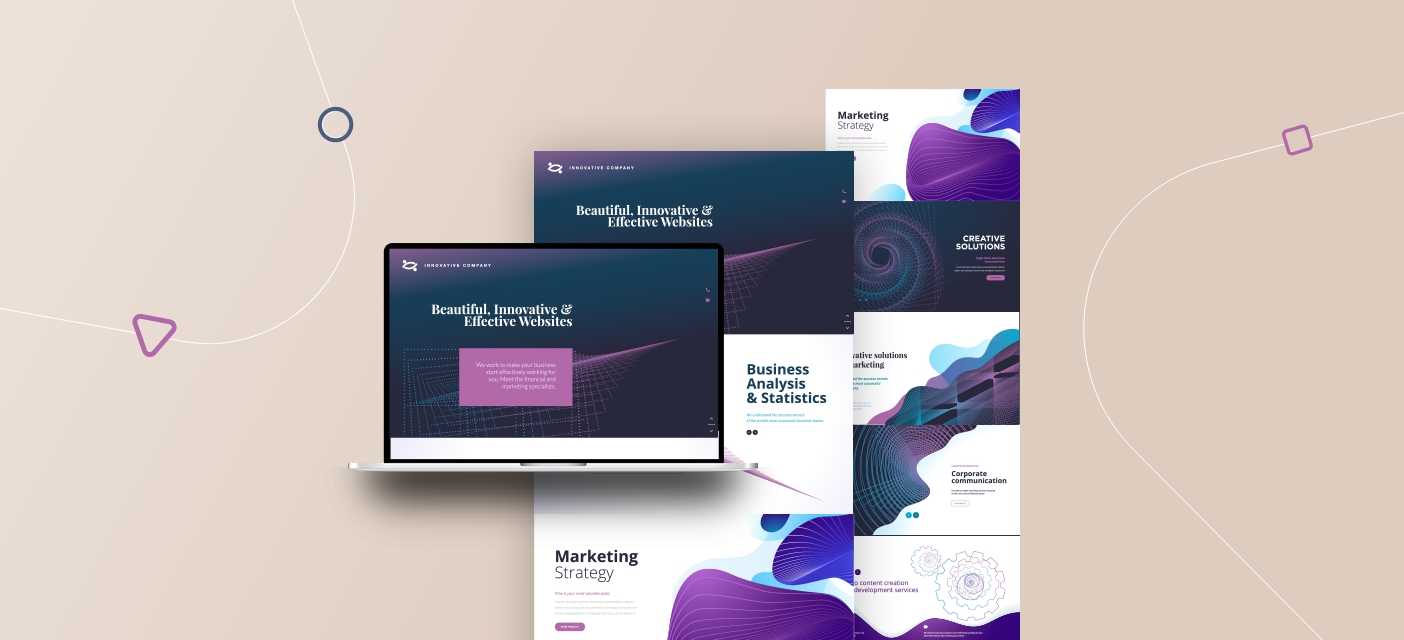Loading...


In today’s dynamic online world, a website is often the first point of contact with your brand. Unfortunately, even minor shortcomings can discourage potential customers and negatively affect your business performance.
We’ve compiled a list of the 10 most common mistakes for you, along with explanations of why they are so damaging and how to avoid them:
We live in a mobile-first era. In 2025, more than 64% of searches are done on smartphones and tablets. Having a site that doesn’t automatically adapt to different screen sizes is a serious business risk. Mobile users become frustrated with small text, the need to scroll horizontally and navigation that doesn’t work, often leading them to leave the site immediately and look for alternatives. Ignoring responsiveness also means a lower ranking in Google’s search results, which promotes mobile-friendly sites, which directly translates into less organic traffic. Remember, mobile optimization is not an add-on, it’s the foundation.
In a world of instant gratification, no one has patience for slow-loading pages. The research is merciless: pages that load more than 5 seconds lose a significant amount of conversions compared to those that load quickly. Unoptimized images and an excess of elements on the page are typical culprits, significantly affecting user satisfaction. Even a one-second delay can result in a measurable drop in conversion rates, so speed optimization should be a priority. Every second matters – take care of your site’s speed.
Intuitive navigation is the backbone of a helpful site. If users can’t quickly find what they’re looking for, they’re likely to leave the site, annoyed by the lack of clarity and logic. Confusing menus, unclear labels and inconsistent structure are a simple path to frustration and loss of trust, negatively impacting the perception of your brand as professional and trustworthy. Navigation should be logical, consistent across all pages and placed in the expected location (usually at the top) to ensure smooth and seamless navigation.
An excess of visual stimuli overwhelms users and makes it difficult for them to focus on the most critical information or take action, leading to feelings of chaos and confusion. Too many elements, lack of space, and visual disarray increase the rejection rate as users feel lost and don’t know what to focus on. Remember the “less is more” rule. Use white space strategically to improve readability and direct the user’s attention where you want it, creating a clear and organized interface.
Text is the primary medium of information. If it’s challenging to read, your message won’t reach the recipient, and users will quickly become discouraged and leave the site. A font size that is too small, low contrast with the background, an excess of centred text or the use of too many decorative fonts is common mistakes that significantly hinder the absorption of content. Go for simplicity and readability. For introductory text, a minimum of 16px and adequate line spacing is recommended, ensuring reading comfort and positively impacting the user experience.
Your website is a digital extension of your brand. Inconsistent colours, fonts, and visual styles can make your brand look unprofessional and chaotic, undermining user trust and making it difficult to build a consistent image. Develop a detailed style guide and apply it consistently across all pages to ensure a unified and recognizable look. The site’s colours and visual elements should harmonize with your corporate identity, reinforcing recognition and building a strong brand identity.
De-pixelated, generic stock photos can spoil the first impression, making your site look amateurish and unreliable. Use high-quality, well-chosen images that match your brand’s colour scheme, inspire confidence, and add professionalism and authenticity. Be sure to optimize their size so they don’t slow down page loading, striking a balance between visual quality and performance. Avoid texts superimposed on overly patterned backgrounds, which can make them difficult to read and detract from the site’s overall aesthetics.
Calls to action are key conversion elements. If they aren’t clear, visible, and compelling, users won’t know what to do next, which directly impacts business goals. Make sure your CTAs stand out visually, are strategically placed, and clearly communicate value to the user, encouraging them to take the desired action. Avoid placing too many different CTAs on the page—this can reduce the effectiveness of each one and confuse users.
A beautiful website that no one sees is less effective at meeting business goals and attracting new customers. Designing with SEO in mind isn’t just a technical issue, it’s also about structures and content that help search engines understand and index your site. Ensure proper hierarchy of headings (H1-H6), avoid placing important text over images, and create a logical internal linking structure to make navigation easier for users and search engine robots, increasing your site’s online visibility.
Web design is a process of continuous improvement. Operating without analyzing data and user feedback limits your ability to optimize and tailor your site to your audience’s real needs. Implement tools to track user behaviour (e.g., heat maps, session recording), analyze conversion data, conduct A/B testing to understand what works and what doesn’t, and make evidence-based design decisions. Do away with aggressive pop-ups. These intrusive elements significantly detract from the browsing experience, stir up negative emotions, and, in many cases, discourage users from further interaction, leading them to leave the site.
Creating an effective website requires consideration of both aesthetics and functionality. Avoiding these 10 common mistakes is key to ensuring a positive user experience, increasing conversions, and building a strong online presence. Remember, constantly monitoring, analyzing, and optimizing your site based on data and user feedback is the foundation for long-term online success.
Contact us to learn how we can help you avoid these mistakes and create a site that delights your users and achieves your business goals.

Copyrights © Media4U Sp. z o.o. All Rights Reserved.
Privacy Policy